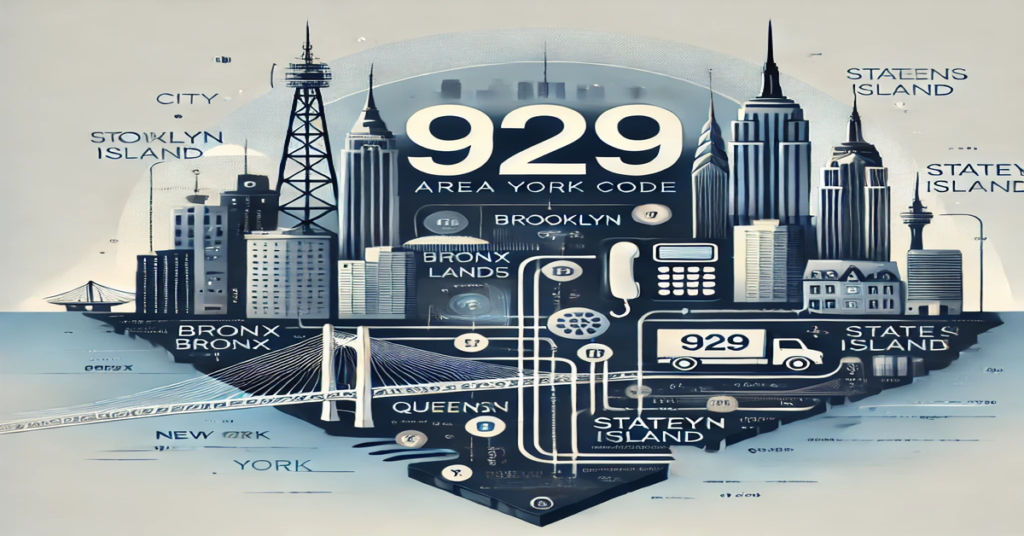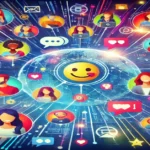The 929 area code is a notable part of the North American Numbering Plan (NANP), a system established in 1947 to simplify and streamline telephone number allocation. This area code is primarily associated with New York City, one of the most vibrant and densely populated urban centers in the United States. It specifically serves the boroughs of the Bronx, Brooklyn, Queens, and Staten Island. In this comprehensive guide, we’ll explore the history, significance, and practical implications of the 929 area code while also addressing some commonly asked questions about it.
History of the 929 Area Code
The 929 area is a relatively new addition to the New York City telecommunications landscape. It was introduced in 2011 as an overlay to the existing 718, 347, and 917 area codes. The demand for new phone numbers in New York City had been growing exponentially due to an increase in population, the proliferation of mobile phones, and the rise of businesses requiring multiple phone lines.
Overlay area codes like 929 are introduced when an existing area code exhausts its available numbers. Instead of splitting an area geographically (as was common in earlier decades), overlays allow new numbers to be assigned without requiring existing users to change their numbers. This method ensures minimal disruption for residents and businesses alike.
Geographic Coverage of the 929 Area Code
The 929 area serves a large portion of New York City, covering:
- Bronx: Known for its cultural diversity, the Bronx is home to Yankee Stadium, the Bronx Zoo, and the New York Botanical Garden.
- Brooklyn: One of the most populous boroughs, Brooklyn is a hub for arts, technology, and education.
- Queens: With its incredible ethnic diversity, Queens is a melting pot of cultures and a major transportation hub due to JFK and LaGuardia airports.
- Staten Island: Known for its suburban feel, Staten Island offers a quieter lifestyle compared to the bustling atmosphere of other boroughs.
How the 929 Area Code Functions
The 929 area operates as an overlay, meaning it shares its geographic region with the older 718, 347, and 917 codes. This overlay system requires 10-digit dialing for all local calls. For example, if you are calling within the Bronx or from one part of Brooklyn to another, you must dial the full phone number, including the area code, even if the number is in the same area.
Impacts of the 929 Area Code
- Increased Telephone Number Availability: The introduction of the 929 area code helped accommodate the growing demand for new phone numbers in New York City.
- Business Growth: New businesses in the city benefit from access to additional phone numbers. This availability is crucial in a bustling metropolis like New York, where startups and established companies thrive side by side.
- Ease of Transition: The overlay approach minimized inconvenience for residents and businesses, as there was no need for existing numbers to be reassigned.
Demographics and Usage Trends
New York City’s diverse population heavily influences the use of the 929 area. Many of its users are younger professionals and entrepreneurs who have moved to the city in recent years. Additionally, the area code is often associated with mobile devices, as the demand for cell phone numbers continues to surpass that for landlines.
The tech-savvy demographic in areas like Brooklyn and Queens has also contributed to the rise of internet-based phone services, often tied to the 929 code. Businesses in these areas frequently adopt virtual numbers for customer service and sales operations, making the 929 code even more prevalent.
Technology and the 929 Area Code
The integration of the 929 area code into New York City’s telecommunications network coincided with the rise of new technologies such as Voice over Internet Protocol (VoIP) and cloud-based telephony. These innovations have enabled businesses and individuals to establish multiple lines under a single account, often incorporating area codes like 929 for professional or localized appeal.
Moreover, the increasing use of mobile apps for calling, texting, and video conferencing has made area codes less geographically tied. However, many people still associate area codes like 929 with New York City, making it a valuable identifier for local businesses and individuals.
Cultural Significance of Area Codes in NYC
In a city as dynamic as New York, area codes carry a certain cultural weight. Older codes like 212 are often seen as prestigious due to their association with Manhattan and their scarcity. Similarly, newer codes like 929 reflect the city’s constant evolution and its status as a global hub for commerce and culture.
The 929 area code has quickly gained acceptance as part of the city’s identity, particularly among younger generations who value its fresh and modern connotations. For many, having a 929 number symbolizes a connection to New York City’s vibrant and ever-changing landscape.
Challenges and Criticisms
While the 929 area code has generally been well-received, some challenges have arisen:
- Scams and Robocalls: Like all area codes, 929 has been targeted by scammers and robocallers. Residents are often advised to screen unknown numbers and report suspicious calls.
- Adjusting to 10-Digit Dialing: Although 10-digit dialing is now standard in overlay regions, it required an adjustment period for residents used to 7-digit local dialing.
- Number Exhaustion: Despite the introduction of the 929 code, the continued growth of New York City means that even more area codes may be needed in the future.
Future of the 929 Area Code
The 929 area is expected to remain a vital part of New York City’s telecommunications system for decades to come. As technology advances and the city continues to grow, new solutions may emerge to address the increasing demand for phone numbers. For example, advanced number management strategies and enhanced VoIP services could help optimize the allocation of phone numbers within the city.
Additionally, the cultural significance of area codes is likely to persist, with residents and businesses embracing them as part of their identity. As such, the 929 area code will continue to play an essential role in connecting New Yorkers to each other and the world.
Conclusion
The 929 area is more than just a series of digits; it is a testament to New York City’s growth, diversity, and technological advancement. From its inception in 2011 to its widespread adoption today, the 929 code reflects the city’s resilience and adaptability. Whether you’re a resident, business owner, or visitor, understanding the role and significance of the 929 area provides valuable insights into the complex fabric of New York City.
FAQs About the 929 Area Code
- What areas does the 929 area code cover?
The 929 area code serves the Bronx, Brooklyn, Queens, and Staten Island in New York City. - Why was the 929 area code introduced?
It was introduced in 2011 as an overlay to the 718, 347, and 917 area codes to address the growing demand for new phone numbers. - Do I need to dial the area code for local calls in 929?
Yes, 10-digit dialing is required for all local calls within the 929 area code and its overlay regions. - Is the 929 area code associated with mobile or landline numbers?
The 929 code is used for both mobile and landline numbers, though it is increasingly associated with mobile devices. - How can I avoid scams from unknown 929 numbers?
Screen unknown calls, avoid sharing personal information, and report suspicious activity to your service provider or authorities. - Will New York City need more area codes in the future?
Likely, as the city continues to grow, additional area codes may be introduced to meet the demand for new phone numbers.







